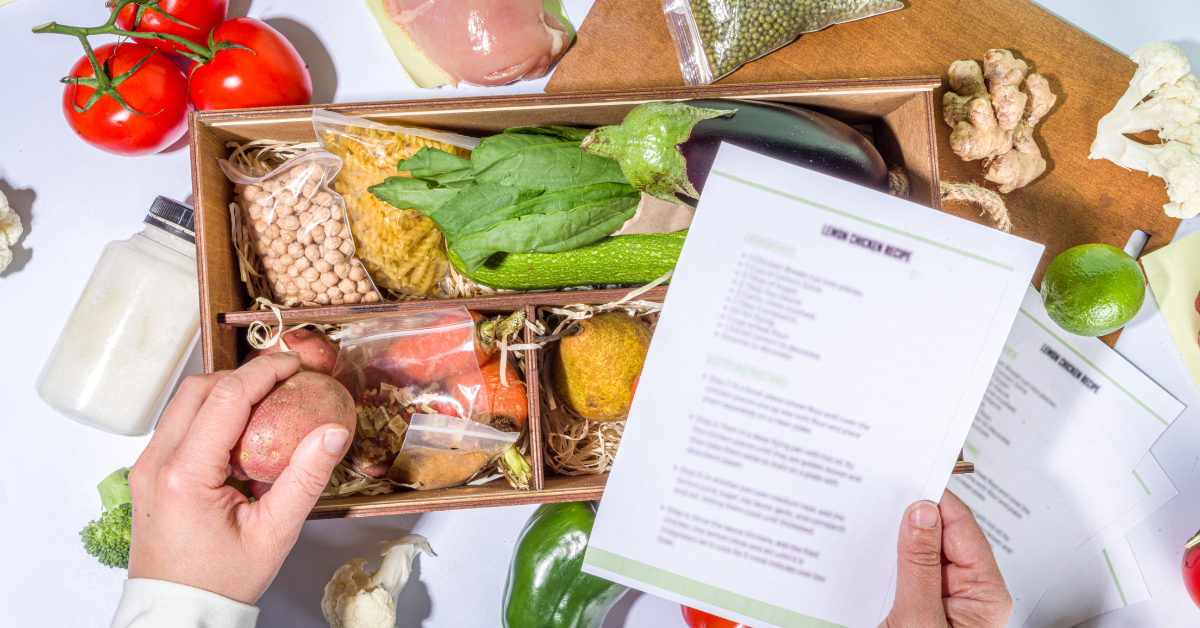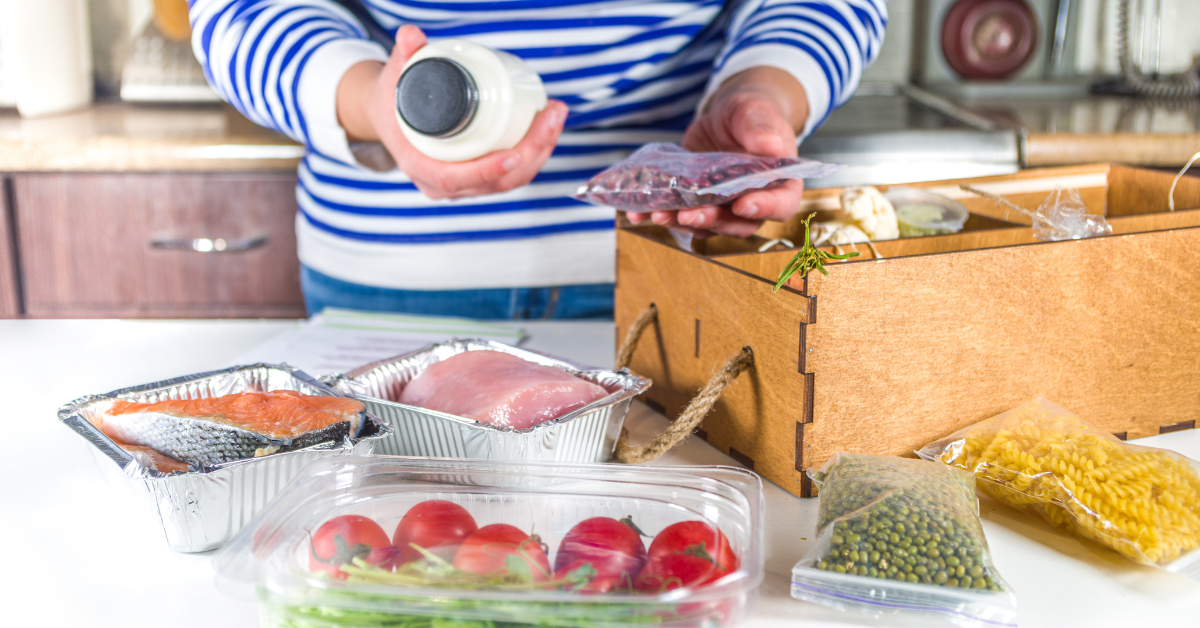It takes time to plan out meals, take inventory, shop for ingredients that fit within your budget, prepare the meal, and clean up. In recent years, we have seen a spike in the use of meal delivery services. Think of this as a helping hand during a busy week – for a competitive price, you receive a variable number of meals that include all of the ingredients, in their respective quantities, and step-by-step instructions to create an instant family favorite in typically less than 30 minutes.
These meals, including Every Plate, Hungry Root, Hello Fresh, Blue Apron, Home Chef, Factor, and Purple Carrot, have skyrocketed in popularity due to their convenience, taste, and easy-to-follow steps – not to mention that you are able to keep the recipe card and add your favorites to your meal rotation! Let’s break down the pros and cons of utilizing these meal prep/delivery services.
PROS
1. Maximum convenience
All the ingredients and quantities arrive ready to be made. This can be helpful in reducing decision-making and creating a more seamless cooking experience.
2. Exposure to new recipes
Many of the meal ideas offered through these services feature a wide variety of flavors, textures, and ingredients from all over the world. This can present a welcomed opportunity to try a new food or flavor profile and expose buyers to global cuisine!
3. Easy-to-follow steps
The recipe cards feature simple, straightforward steps to make each tasty dish. This reduces confusion, and stress, and maximizes the cooking experience!
4. Reduced food waste
Since all ingredients are portioned out, the likelihood of wasting food is reduced significantly. Recent feedback also suggests that cooking waste during meal preparation is also reduced while using these kits.
5. Can build up skills in the kitchen
These kits are not meant for just one level of cooking. Chefs, home cooks, amateurs, and even first-time cooks can benefit from making these recipes. Plus, cooking is a very useful and practical skill to improve!
6. Can lower food bill
Oftentimes, we purchase our groceries, get overwhelmed, and choose to dine out. If you find your budget isn’t doing so well in the food/restaurant department, consider utilizing meal delivery kits as part of your meal plan!
7. Allows you to customize
Whatever your eating preferences may be, there is almost always a way to accommodate them through the meal kits! Options often include vegan, vegetarian, gluten-free, dairy-free, high protein, etc.
8. Naturally eating at home more
We know how expensive dining out can be. Planning your meals ahead of time using the meal kits means more money saved and more time at home with your family. Research shows that family-style meals every night can be beneficial in the development of social skills and in establishing positive role-modeling behavior!
Cons
1. Some of the food can go to waste
If you are not keen on a certain ingredient(s), they are more likely to be discarded. If meal kits have been held at incorrect temperatures or sat out too long on your porch on a hot day, food safety comes into play.
2. Delivery delays
While delivery timing has improved over recent years, there is a fair chance that your meal kit(s) will not arrive on time. Weather, staffing shortages, manufacturing delays… all of these factors that are out of our control can slow down the transit time and delay your meal.
3. Portions may not be aligned with your nutrition goals
Because ingredients are pre-portioned out, you and your family’s needs may be higher or lower than what is included. For example, if you are training for a marathon, it is unlikely that one portion will suffice to fuel you appropriately. In this case, you would have to supplement the meal kit with what you have at home.
4. May not save time for dinner
While the meal kits can be convenient, simple, and potentially save money, they may not always save time. Between cooking the food and cleaning up, there may not be a difference between the timing of the meal kit and you purchasing those ingredients at the grocery store and cooking them.


5. Doesn’t always come balanced
Sometimes, the recipes do not follow MyPlate meal recommendations – ½ plate consisting of fruits/veggies, ~¼ plate lean protein, and ~¼ plate fiber-rich carbohydrate. Sometimes, the meal components are heavier on meat and starch and less on veggies but commonly follow the standard meat/starch/veg framework that we often see at dinner. This can be alleviated by supplementing plant-forward ingredients that you have at home, such as non-starchy veggies or fresh fruit.
6. Is geared more towards dinner foods
These meal kits are typically used in the dinner time frame and are limited in regards to common breakfast/lunch foods. Something to keep in mind if you are a big breakfast or lunch fan!
7. Increased packaging waste
One of the largest critiques of meal prep/delivery kits is packaging waste, as each ingredient is individually packaged. While it is difficult to avoid this, especially with sauces, we are hopeful that biodegradable packaging will be utilized more often to be more eco-friendly.
8. Is meant to supplement meals
These meal kits are not meant to replace all of your meals, breakfast/lunch/dinner every day. They are more of a supplement to your meal regimen, allowing you to try new recipes a few nights a week and create lasting memories in the kitchen.


Olivia Chadwick
MS, RD, LDN
She has a passion for working with vulnerable populations, including older adults, those with special needs, low-income families, individuals with food allergies/intolerances, those with autoimmune conditions, and college students.. READ MORE

